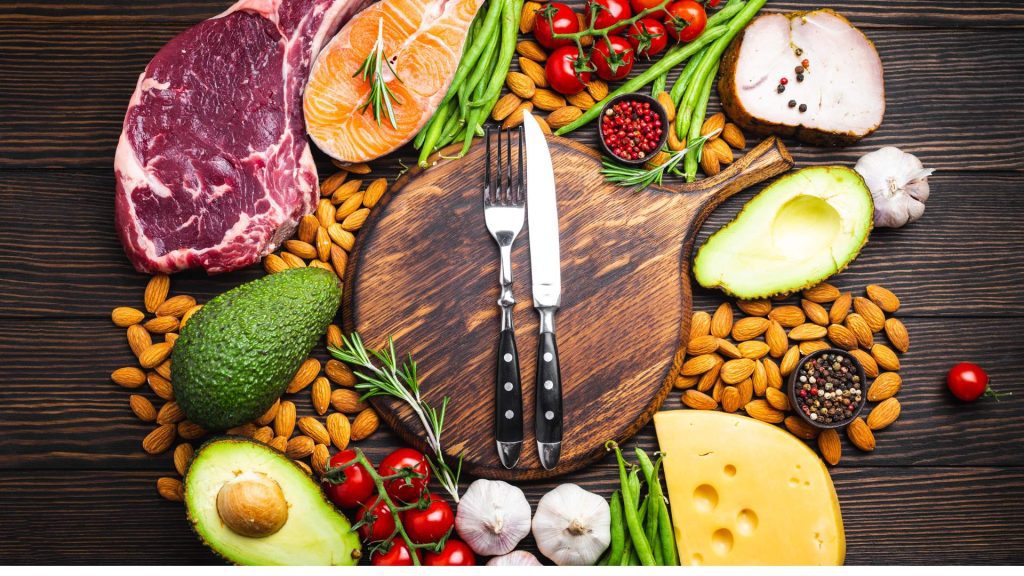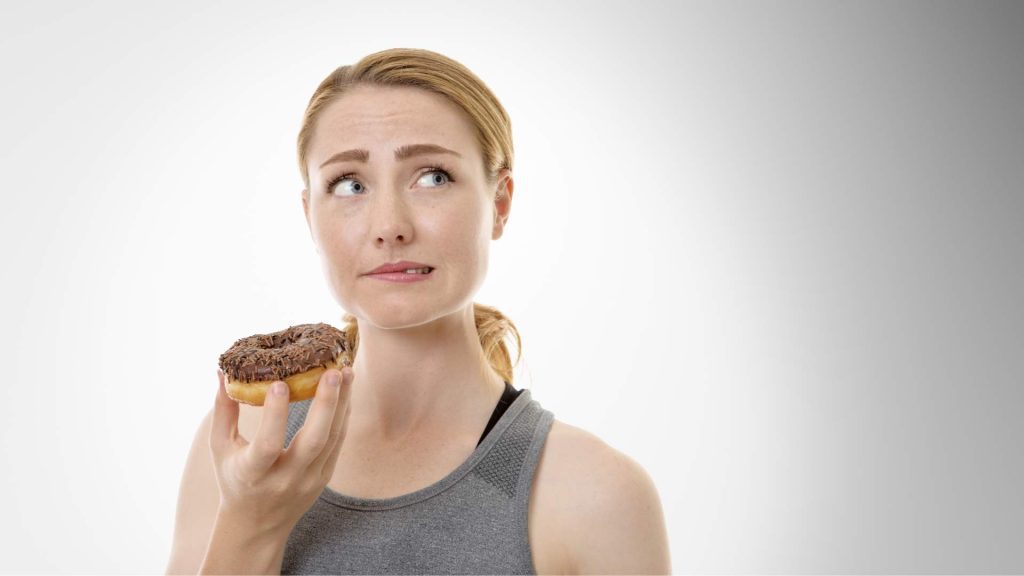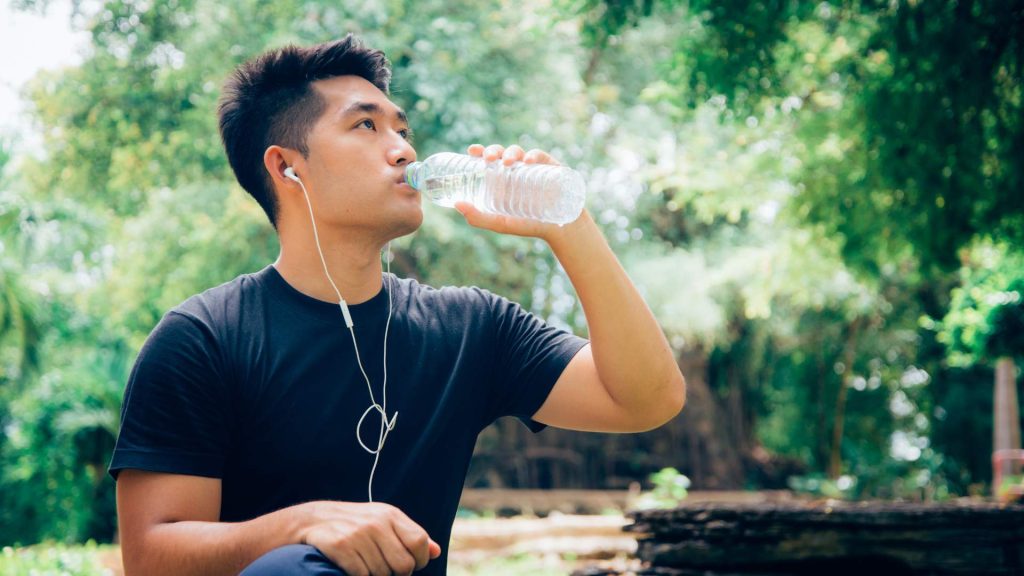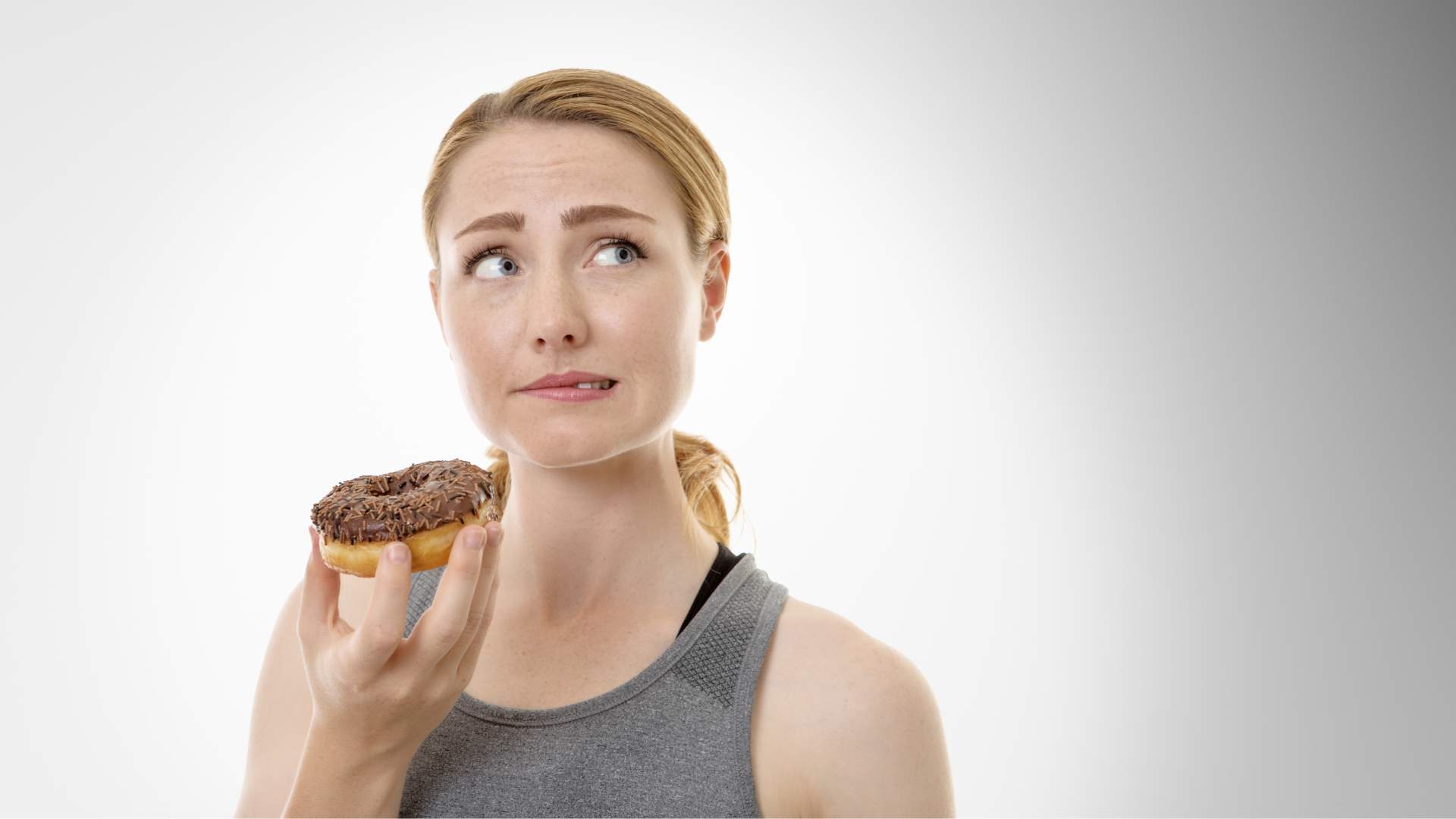You find yourself reaching for bread each time you walk past your pantry.
Ice cream is calling your name after you get your kids down for bed.
The artificial sugar replacements are making your cravings worse.
Whether you’re attempting a keto diet for the first time or you’ve been going at it for months, learning how to curb cravings on keto can be tricky and can cause you to throw in the towel.
With the right coach and the right approach to the keto diet, you can successfully leave those cravings behind.
Learn why your body craves different foods and how to curb cravings on keto.
Table of Contents
- Why Am I Having Cravings on Keto?
- At What Point in the Keto Diet Are Cravings Common?
- 11 Tips for Curbing Cravings While on Keto
- Keto Fitness Coaching: Personalized Nutrition and Fitness Coaching for Lifelong Success

Why Am I Having Cravings on Keto?
By definition, the ketogenic diet is designed to curb cravings. That’s one of the big reasons it’s such an attractive way of eating for many people.
On their own, carbohydrates cause hunger. Because they lack filling fiber, your body digests them quickly, failing to promote significant feelings of fullness. Carbohydrates also cause a spike in insulin levels, which makes you hungry. When you eat low amounts of carbohydrates, as you do on the keto diet, your body begins to crave them because it’s used to carbs being its main energy source.
Tasting and eating carbs (and sugar) has been shown to stimulate the release of …
- Dopamine
- Serotonin; and
- Endorphins
… which are all related to “feeling good,” making it difficult to stop eating them.
Cravings on keto might also be triggered by:
- Low amounts of fat or protein
- Too many artificial sweeteners
- The ‘keto-flu’
- Stress
- Hormone changes
At What Point in the Keto Diet Are Cravings Common?
As with most diets, cravings are most intense in the first few days of going keto. Typically, cravings die off as the body adapts to fewer carbohydrates and instead, uses fats for fuel.
The healthy fats will begin to help you feel satiated — allowing you to kick both the cravings and the hunger to the side.
Are you interested in learning how to successfully navigate the ketogenic diet? Keto Fitness Coaching is fully online, designed to help people worldwide with customized nutrition plans and workouts to reach their health goals. Contact us today.

11 Tips for Curbing Cravings While on Keto
Believe it or not, there is a rhyme and reason for your cravings and a science behind why you’re experiencing them.
Learn how to curb cravings on keto through:
- Understanding your body
- Fueling it correctly
- Learning why you crave certain foods
- And more

#1: Look at What You’re Eating
A benefit to the ketogenic diet is that it often prevents hunger for hours after meals, depending on what you’re eating. Although keto is designed as a low-carb diet, you want to be sure you’re eating enough protein and healthy fats to keep your body feeling full.
If you’re regularly looking for a snack between meals, reassess your meals. You might just need to add in more protein and healthy fats to curb your cravings.
Keto-friendly snacks are often promoted to those following a keto diet. If you feel like you must reach for a snack, try whole foods like:
- Chicken
- Avocado
- Boiled eggs
- Cheese
- Olives
- Peppers
- Carrots
- Celery
- Cucumbers
- Plain Greek yogurt
#2: Make Sure You’re Getting Enough Minerals
Because you’re eating low-carb when following the keto diet, you tend to lose insulin. This can make you lack minerals — like potassium, sodium, and magnesium — which alerts your body to want what it is lacking.
Keep these in mind:
- Caffeine cravings are paired with a lack of:
- Iron
- Vitamin C
- Sulfur
- Phosphorus
- Chocolate cravings are triggered by a lack of magnesium, which promotes relaxation and aids in good digestion. Substitute chocolate with:
- Nuts and seeds
- Fish
- Dark leafy greens
- Craving sugar? You need more protein to help with your lack of:
- Chromium
- Carbon
- Phosphorous
- Sulfur
- Tryptophan
- If you’re dying to carb-load, your body needs nitrogen. Try eating fresh fruits and vegetables.
- You need calcium if you’re craving oily or fatty foods. Up your leafy green intake.
- Craving salty foods? Your body wants chloride and zinc. Try adding things like:
- Fish
- Goat cheese
- Real sea salt
- Nuts and seeds
#3: Drink More Water
Some symptoms of dehydration — headache, fatigue, lightheadedness, or difficulty concentrating — can mimic feelings of hunger. You might also experience normal hunger cues, like a growling stomach.
But, surprise — you might not be hungry.
Before reaching for food, try to drink at least eight ounces of water and see if that satiates your hunger or food cravings. Dehydration can quickly fool you into thinking you’re hungry and have you reaching for what’s readily available, even if it goes against your keto diet plan.
#4: Learn To Understand Your Body
You just can’t kick the cravings for bread and ice cream.
We get it, it’s frustrating to feel like you’re doing everything right, but the cravings keep coming back.
Each body is different, so learning to understand yours can help when it comes to learning how to curb cravings on keto. There could be an underlying reason for your cravings on keto and at Keto Fitness Coaching, we take a deep dive and work to figure that out.
At Keto Fitness Coaching, we also work to ensure our clients are eating enough …
- Protein
- Vegetables; and
- Omega-3 and omega-6 fats
… to help satiate hunger and keep cravings at bay.
#5: Get Back to Basics
The keto diet generally preaches to increase your fat intake and replace your regular snacks with snacks that are considered to be “keto-friendly.”
But, if you’re doing keto the right way, there’s no need for a major jump in your fat intake or processed keto-friendly snacks.
Instead, Keto Fitness Coaching stresses getting back to the basics of eating whole foods. Instead of tricking your body into thinking it’s getting something carb-heavy or sweet by eating replacement foods, focus on eating …
- Protein
- Vegetables; and
- Healthy fats
… and you’ll be one step closer to eliminating cravings.
#6: Ditch Keto-Friendly Sweeteners
The keto diet promotes ditching traditional sugar and substituting it with keto-friendly sweeteners. This doesn’t solve your hunger and cravings problem, though.
Once your taste buds taste a sweet food, it registers in your brain as a carb, even though it’s not regular sugar.
To combat this, we recommend ditching sweeteners altogether.
#7: Change Your Habits
Habits can be hard to break. That’s because they’re triggered by cues like:
- Time of day
- Location
- Activity
They usually end with a reward. This is known as “the habit loop.”
For example:
- Cue — You watch television every evening. The time of day becomes your trigger.
- Craving — Whenever you watch television, you eat a bag of chips. The act of watching television triggers your craving for chips.
- Response — You engage in the behavior of eating chips while watching television in the evening.
- Reward — You’ve satisfied your craving and feel pleasure or relief.
When you sit down to watch television in the evening, your brain naturally wants chips — it craves them. Instead of giving in to the chip craving, work to change that habit. Try substituting chips with a bowl of nuts and seeds instead.
#8: Manage Stress
Stress and cravings often go hand-in-hand. When you’re feeling stressed, your body releases the stress hormone, cortisol.
Cortisol makes you crave foods high in …
- Sugar
- Fats
- Salt
… because your brain thinks it needs these energy sources to fight whatever is causing your stress.
Instead of letting your stress get out of control and reaching for the not-so-good-for-you foods, learn to recognize and manage your stressors.
To manage stress, try things like:
- Walking
- Meditating
- Exercising
- Breathing exercises
- Getting better sleep
#9: Keep a Food Diary
One of the best ways to manage cravings is to learn exactly what it is that triggers them. Remember the habit loop we talked about earlier? This concept can be helpful here.
If you’ve tried a handful of things that don’t seem to be working, try keeping a food diary. In it, you can record when your cravings begin and what cues brought them on to help best identify the sources of your cravings.
From there, you can work to find a solution.
#10: Understand That Cravings Are Normal
If you’re eating a keto diet and doing all you can to fight cravings, but it just isn’t working, don’t let it get you down. Cravings are normal. Although a keto diet says you’re not going to experience cravings, that doesn’t mean you shouldn’t have them or that they’ll automatically be gone after a few weeks.
Our bodies are wired to search for energy sources. We need them to survive. So of course it’s normal to crave those sugary, salty, carb-heavy foods.
Rather than getting down on yourself for still experiencing cravings, change your mindset. Recognize what cues bring your cravings on and stock your tool belt with helpful tips and tricks to work through them.
And remember, it’s what you do most of the time that will help you get to your goals.
#11: Ladies Only: Is It Keto-Related or a Symptom of PMS??
Do you feel like you’re experiencing cravings around your menstrual cycle?
You’re not crazy, those cravings are real.
When you’re on your period, estrogen slowly begins to rise until ovulation then begins to decrease. As it decreases, progesterone begins to rise until your cycle comes again.
One study suggests that the changes in both estrogen and progesterone cause cravings for high-carb and sweet foods.
But remember, the final objective of a menstrual cycle is pregnancy, so a woman’s body will hold onto as much energy as it can to help sustain a growing fetus. This means a larger calorie requirement, which could mean more cravings.

Keto Fitness Coaching: Personalized Nutrition and Fitness Coaching for Lifelong Success
We get it. Sticking to a fitness and nutrition plan can be tough. Whether you’re new to working out and eating a keto diet or you’ve been at it forever, Keto Fitness Coaching can help.
At Keto Fitness Coaching, we work to implement a low-carb diet that uses whole foods as the foundation. We don’t push replacement foods or keto-friendly snacks. Instead, we stress the importance of eating high-protein and whole foods to help our clients target inflammation and accomplish fat loss in a healthy way.
We offer three coaching options, including:
- One-time consultation with a certified nutrition specialist
- Continuous coaching with a certified keto coach
- Custom macronutrients calculation
And, we help clients anywhere in the world — that means you! Contact us for a free first session today.

The content in this blog should not be used in place of direct medical advice/treatment and is solely for informational purposes.


